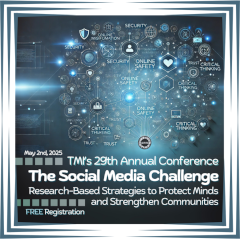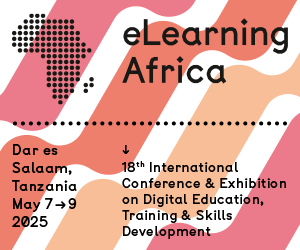Viewing the Use of ICT from a Student Perspective
 Bærum (NO), November 2012 - "Breaking the Wall" is the title of Frank Baklid's contribution at ONLINE EDUCA BERLIN. "ICTs: Critical E-Competencies for Teachers" is the headline of the session, which will discuss the competencies required to feel at ease using Web 2.0 - or even Web 3.0 virtual learning environments, Moodle, and more. The session will address teachers in schools and talk about the involvement of parents in education.
Bærum (NO), November 2012 - "Breaking the Wall" is the title of Frank Baklid's contribution at ONLINE EDUCA BERLIN. "ICTs: Critical E-Competencies for Teachers" is the headline of the session, which will discuss the competencies required to feel at ease using Web 2.0 - or even Web 3.0 virtual learning environments, Moodle, and more. The session will address teachers in schools and talk about the involvement of parents in education.
In your opinion, what are the e-competencies that today's teachers absolutely need and how can they be acquired?
Frank Baklid: All teachers must have a basic understanding of how ICT works. They must be interested in what will come in the future and have the ability to put themselves into the students digital mindset. The teacher can acquire good skills by watching the use of ICT from a student perspective and have an open mind in order to acquire skills from students. The point is that students, who are digital natives, already think in terms of MTM - "many to me." Students are users of laptops, tablets, smart phones, game consoles - anything that can go online. It is all about different user interfaces, programs, and use.
Skills related to privacy issues and the consequences that can occur as the result of improper use of technology are important. This is an area of which students are not always aware and with which adults have to assist them. We also need to work on a common culture of sharing and collaboration across schools where reuse of what other teachers have facilitated is natural.
Time for reflection alone and with others is also important. By being active on social media the competence will be improved.
Do Norwegian institutions offer teachers appropriate opportunities for further training, or is the situation similar to Germany, where teachers are left to their own initiative?
Frank Baklid: In Norway, it is up to each municipality how to further educate the teachers. There are opportunities in colleges that offer a degree in ICT, but this is too lengthy for many.
In the municipality of Bærum, we take responsibility as a school owner and have established the role of e-educator. Each school should have at least two e-educators, and many schools have several. E-educators are trained and can offer professional input, for example, in the use of social media, LMSs, and Web 2.0. They also hold workshops where there is a focus on best practices between e-educators.
Furthermore, we are establishing a reflection program in digital didactics where the goal is to associate their own digital practice in direct relation to the work you do as a teacher in the classroom with students. Digital didactics refers to the teachers' skills in using digital tools as an integral part of the instructional goals, content, and methods, as well as in the planning, implementation, and assessment for learning in order to support the students' learning process.
For us to be good at digital didactics, we need a good infrastructure to support tomorrow's working process via the web - and the tool used must become immaterial. It is therefore essential that access to the Internet and the associated technical support that underlies this are sustainable. The establishment of open wireless networks in all schools is a key factor.
When teachers have to take care of their own further training, how should they start the process? What should their first steps be?
Frank Baklid: In order to know where you're going, you must know where you are. By starting with a GAP analysis the teacher can get a good overview. GAP analysis must be viewed in relation to the curriculum, assignments, and what priority areas the school has, as well as how the teacher can achieve the necessary competence.
It is also advisable for teachers to seek the assistance of colleagues at their own school. School leaders must facilitate teachers' development of digital skills. When school leaders set digital didactics on the agenda and prepare a plan for development of digital didactics at their own school, there is a greater chance of success.
Some teachers find it difficult to be a good class leader when devices like cell phones are to be used in teaching. By allying with a colleague who is confident in this field and having her or him with them in the classroom, they can learn from each other's good practices. And when you have a good relationship with your students, you will also be able to use students as a resource.
Teachers need to jump on "the digital train" and relate to the students' input and everyday lives. Innovation, creativity, and entrepreneurship are the fundamental pillars of tomorrow's society. The use of ICT can help to make students curious, motivated, and creative in new ways.
How much training time do you think is necessary before a -œnormal- teacher is ready to offer a Web 2.0-based lesson confidently and successfully?
Frank Baklid: A socio-cultural view on learning that emphasizes that we learn in interaction with others and that we always find ourselves in a social and cultural context is necessary. The fact that students and teachers interact gives knowledge, and we must move away from a mindset in which teachers sit on knowledge and only pass it on in one-way communication. What knowledge teachers possess is of less importance than that they can externalize their knowledge and further develop it in collaboration with others. By combining multiple sources of knowledge and thus having access to broader knowledge and understanding, teachers will become able to find more appropriate actions and new procedures that allow them to perform with confidence in the classroom.
We say that we are to take the digital world into the school. To achieve this, teachers must increasingly use digital tools in their daily teaching. They have to shift the focus from the use of digital tools being something that are used in the computer room a few hours a week to a situation where the use of digital tools becomes an integral part of the teaching process in the classroom. This takes practice - every day. And web 2.0 must be included in the teachers' planning and implementation of teaching, and assessment for learning.
Technological development is incessant. Do you feel that teachers require perpetual training to keep their computer-related competence up to date? If so, what form do you think this training could or should take?
Frank Baklid: Social change creates the need for cultural change in schools, and in the last decade there have been major changes in the way we can access, organize, and share information and knowledge with each other. With the Internet and new digital media such as tablets and smart phones, we move in the "e-society" daily, an online community with a future consisting of completely digitalized service from the public sector. Teachers in Bærum must exploit this opportunity revolution and develop into human capital that can motivate, engage, and educate students for further education, employment, and community participation.
In the present and future society, expertise is not and will not be about possessing knowledge, but rather about having an overview and control of it and knowing what information is available and where to find it. We must adapt ourselves to think digitally and exploit all the potential opportunities that the digital world provides. A society in constant change requires teachers who can work with innovative working models that support key digital competences for lifelong learning. A fundamental restructuring involves changing a culture in which your PC is -œonly a tool" to understanding that the digital society is part of us. The fact that the Internet exists has changed our view of the world around us, our behaviors, our interaction pattern, and thus also our mindset.
By reflecting and having their own GAP analysis, teachers can see what steps they should take to get from one level to the next.
To do this we must have good principals who know what is required to make the students and teachers aware of success factors in school. The principals have to know what is happening in their own schools, follow up, evaluate, and implement changes through systematic and long-term work.










